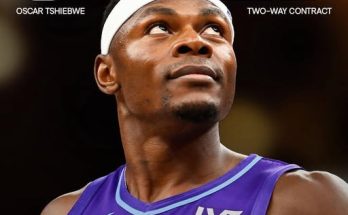The world of college football is no stranger to power brokers—those behind-the-scenes figures who shape the destiny of programs with a mix of influence, money, and strategic maneuvering. Few, however, have orchestrated a takeover as quietly and effectively as Randall Stephenson, the former CEO of AT&T, whose fingerprints are now all over the future of Oklahoma’s college football landscape. Without fanfare or public spectacle, Stephenson has become the unseen architect of seismic shifts in the sport, leveraging his corporate clout, political connections, and deep ties to the University of Oklahoma to steer the Sooners into a new era.
Stephenson’s rise to prominence in college football circles didn’t happen overnight. A University of Oklahoma alumnus and longtime donor, he had always maintained a strong connection to his alma mater. But it was his role as a key figure in the Sooners’ transition from the Big 12 to the Southeastern Conference (SEC) that marked his emergence as a central player in the sport’s realignment chaos. While public attention focused on university presidents and athletic directors, Stephenson worked the back channels, using his corporate network to facilitate conversations between Oklahoma’s leadership and the SEC’s power brokers. His relationships with influential figures like SEC Commissioner Greg Sankey and ESPN executives (AT&T had previously owned a significant stake in the network’s parent company) gave him unique leverage to help broker the deal.
The move to the SEC wasn’t just about athletic competition—it was a financial masterstroke, one that Stephenson understood better than most. As a telecom executive who had navigated multibillion-dollar mergers, he recognized the long-term value of aligning Oklahoma with a conference that boasted the richest media rights deals in college sports. The Big 12, by comparison, was unstable, its future uncertain after the departures of Texas and Oklahoma. Stephenson’s quiet advocacy for the SEC move ensured the Sooners wouldn’t be left behind in the rapidly evolving college football economy.
But Stephenson’s influence didn’t stop at conference realignment. His fingerprints are also evident in Oklahoma’s name, image, and likeness (NIL) strategy, a critical frontier in modern college athletics. As the founder of the “1Oklahoma” collective, Stephenson has played a pivotal role in ensuring the Sooners remain competitive in the NIL era, where fundraising and corporate partnerships are as important as recruiting. His corporate background and connections have helped the collective secure major donations, allowing Oklahoma to attract and retain top talent in an environment where player compensation is now a decisive factor.
Perhaps most telling, however, is Stephenson’s role in shaping Oklahoma’s leadership. When the university needed a new president in 2023, it was Stephenson who was reportedly instrumental in the selection of Joseph Harroz Jr., a leader seen as aligned with his vision for the school’s athletic and financial future. Harroz’s tenure has since been marked by aggressive moves to position Oklahoma at the forefront of college sports, from facility upgrades to strategic conference alignment—all areas where Stephenson’s influence looms large.
What makes Stephenson’s rise so remarkable is how little public attention it has drawn. Unlike high-profile boosters like T. Boone Pickens (Oklahoma State) or Phil Knight (Oregon), Stephenson operates in the shadows, preferring backroom discussions to splashy headlines. Yet his impact is undeniable. In an era where college football is increasingly shaped by media deals, conference networks, and billionaire benefactors, Stephenson represents a new kind of power player—one who wields influence not through overt displays of wealth, but through strategic alliances and corporate sophistication.
The question now is what comes next. With Oklahoma set to join the SEC in 2024, Stephenson’s vision is coming to fruition, but the challenges are far from over. The SEC’s brutal competition, the escalating NIL arms race, and the ever-present threat of further realignment mean that Oklahoma’s future will require continued maneuvering. And if history is any indication, Randall Stephenson will be there, quietly pulling the strings.
In the plains of Oklahoma, where football is religion and power is often measured in championships and donations, Stephenson has rewritten the playbook. He may not be a household name, but in the halls of university trustees, athletic departments, and conference offices, his voice carries weight. The future of Oklahoma football, it seems, is being shaped not just on the field, but in the boardrooms where Randall Stephenson sits at the table.



